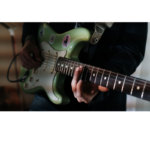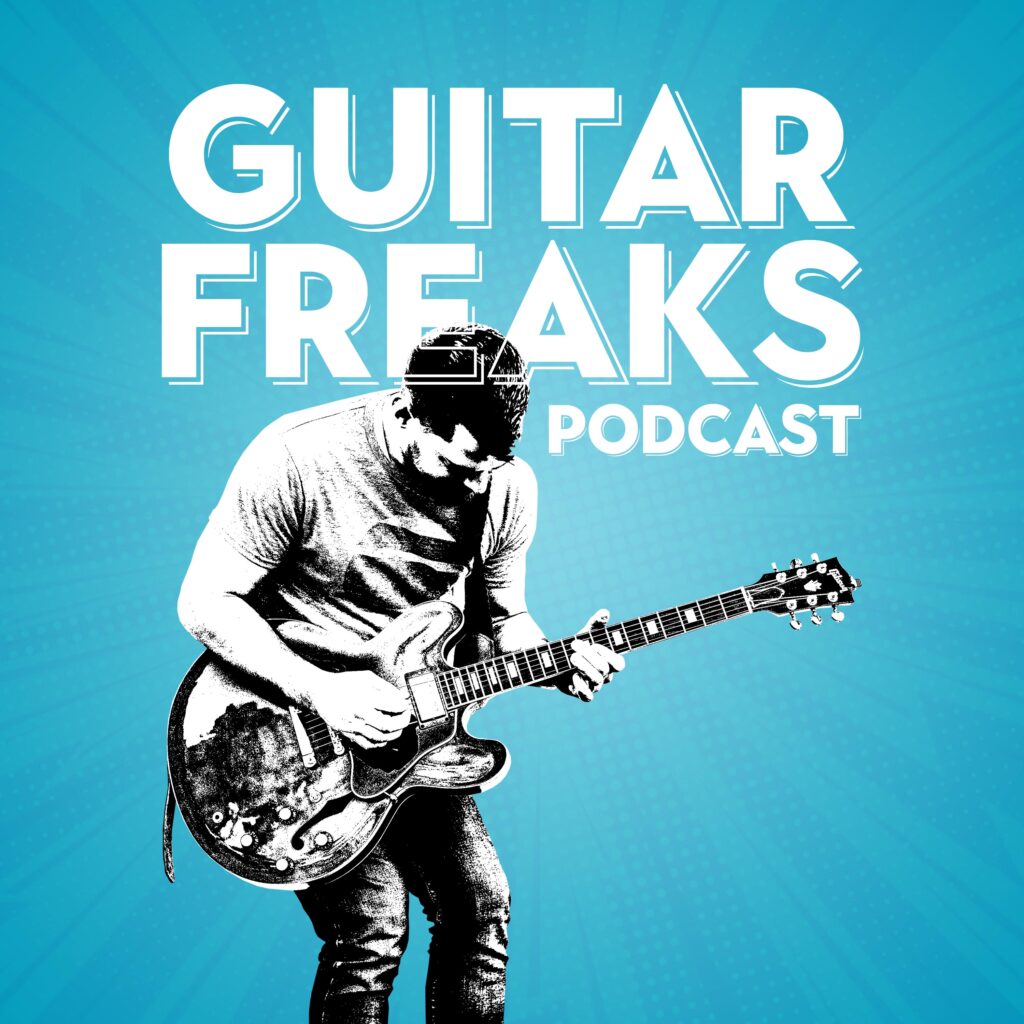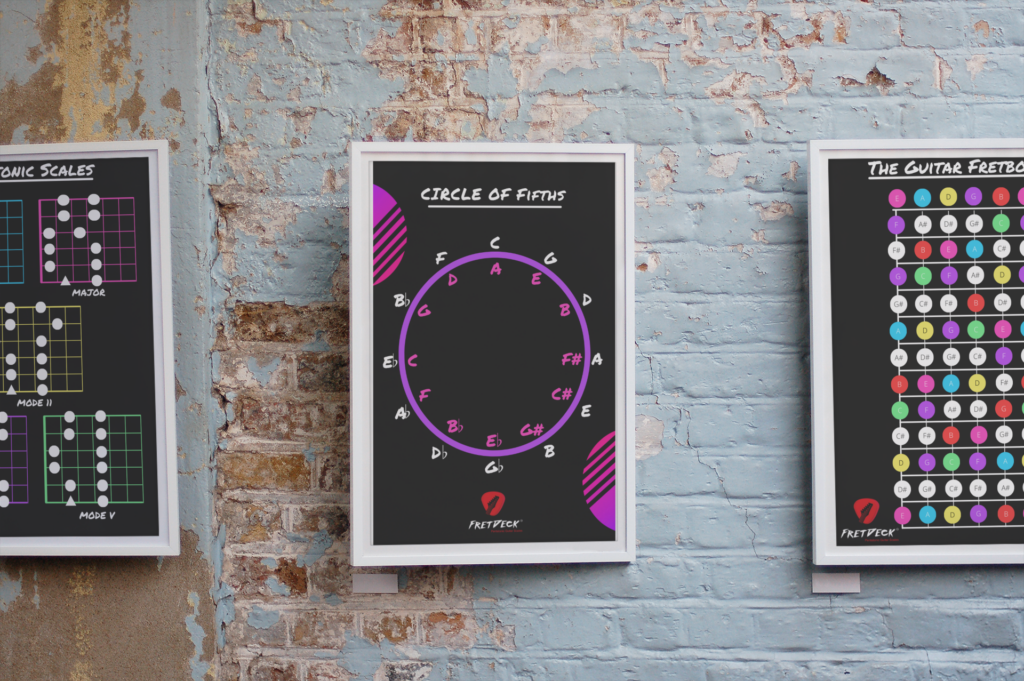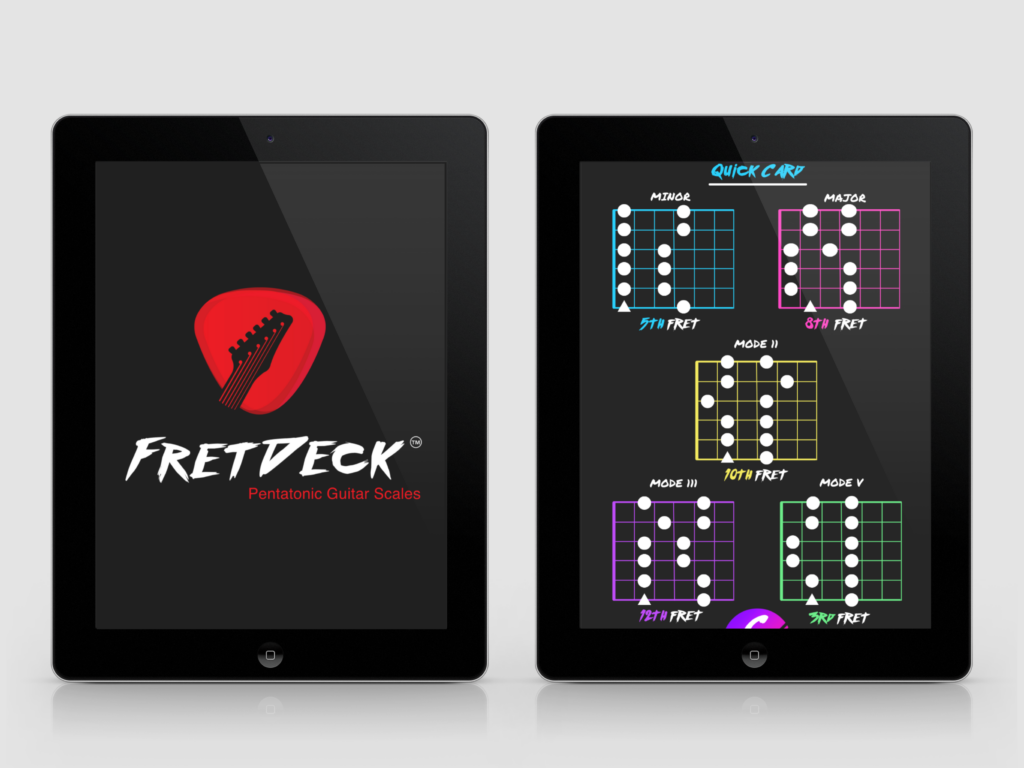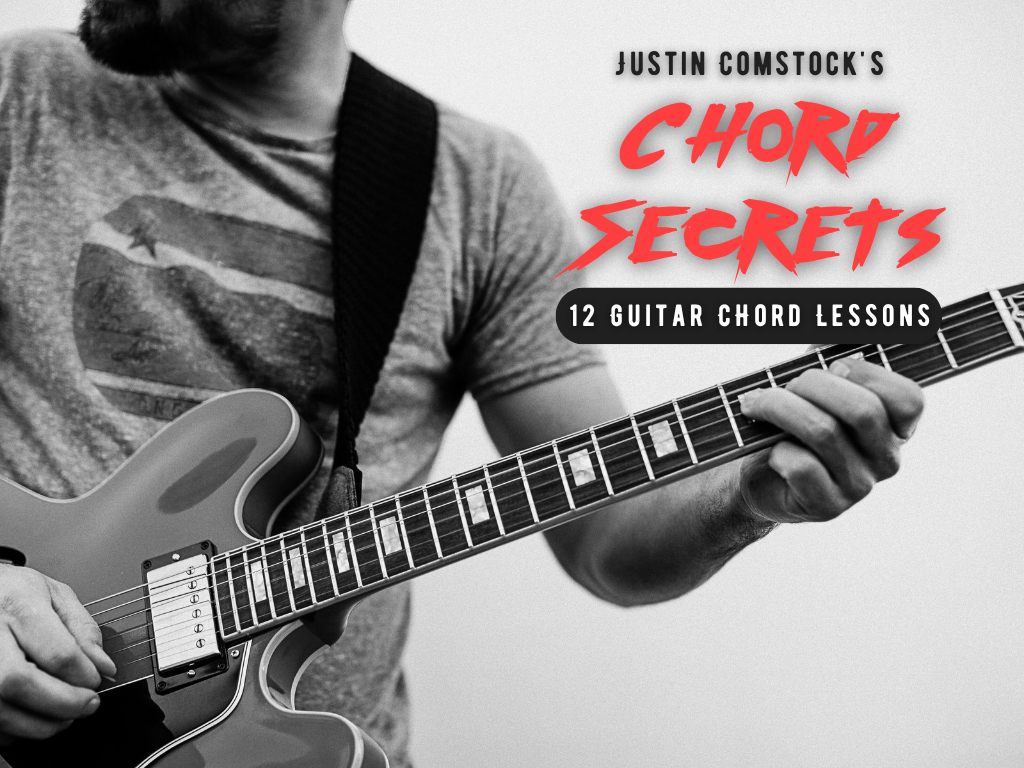Have you ever hit a wall playing guitar minor scale patterns?
You learn a few licks… maybe a scale box or two… but when it comes time to solo freely across the fretboard, your fingers freeze. The inspiration fades. You feel stuck.
If this sounds familiar, I’ve got great news: You’re not broken. You’ve just never been taught the right way to visualize and apply the guitar minor scale patterns that unlock the entire fretboard.
And the good news?
We’ve just launched a system on Kickstarter that will help you finally break free.
But first, let me tell you a quick story…
The Day I Realized Patterns Were the Key to Everything
I was 14 years old, sitting in my bedroom, guitar in hand, desperately trying to figure out how David Gilmour made his solos sing across the fretboard. I knew some minor pentatonic licks. I could rip through a few tabs. But I didn’t understand how to connect anything.
Then I found an old book in my dad’s collection that showed 5 minor scale patterns… not just the pentatonic ones, but full-blown natural minor, Dorian, and blues-based variations.
Suddenly it clicked.
The guitar wasn’t a mystery anymore—it was a map. And scale patterns were the roads.
Now, decades later, I’ve built an entire learning system called FretDeck to teach guitar players exactly what I wish I’d learned that day. And we’re launching it right now on Kickstarter.
But let’s break this down so you can start learning today.

❌ Stop Guessing. Start Shredding.
If you’re still fumbling through scale patterns and box shapes… it’s costing you progress.
FretDeck™ is the no-fluff system that shows you exactly how to master the fretboard—fast. Early access.
⚡️ This isn’t for dabblers. It’s for players who want results.
👉 Click here to join the pre-launch now
Early access. Limited rewards. Don’t wait.
What Are Guitar Minor Scale Patterns?
Let’s make this simple.
A guitar minor scale pattern is a repeatable visual shape on the fretboard that outlines the notes of a minor scale—most often across a 3- to 5-fret span.
There are several types, but the most useful include:
- Natural Minor (Aeolian Mode)
- Minor Pentatonic
- Dorian Mode
- Phrygian Mode
- Melodic and Harmonic Minor
Each of these can be visualized in 5 interlocking positions that move up the neck.
Think of these patterns like LEGO bricks—snap them together and you can build anything. But most guitarists only use one brick, so their solos feel flat and repetitive.
Why Most Guitarists Get Lost After Pattern 1
Here’s where most players go wrong:
- They memorize Pattern 1 (usually the minor pentatonic).
- They learn a few licks in that box.
- But they never venture outside of it.
Result? Their solos sound the same every time. No dynamic movement. No melodic storytelling. No freedom.
This is like learning how to say “hello” in a new language and then wondering why you can’t write a novel.
The problem isn’t you. The problem is the way most people teach guitar.
How Minor Scale Patterns Work (With Visual Map)
Let’s take the A minor scale as an example.
Pattern 1: Root on the 5th fret of the low E string (A note)
e|----------------5--7--8
B|-------------5--6--8---
G|--------4--5--7--------
D|-----5--7--------------
A|--5--7-----------------
E|5--7-------------------
This is your Pattern 1 for A Natural Minor.
Now here’s the magic: the next pattern (Pattern 2) starts where Pattern 1 ends. And so on, up the neck, until you’re looping back into Pattern 1—an octave higher.
By linking these 5 patterns together, you can:
- Solo anywhere on the neck
- Create movement and tension in your playing
- Develop emotional, story-like solos
This is exactly what players like Gary Moore, Slash, and Joe Bonamassa do. They’re not playing one scale pattern—they’re connecting patterns into phrases.
Shortcut: The 5 Core Minor Patterns You Must Know
Here are the 5 core minor scale patterns every guitarist should master:
- Pattern 1 – Root on the Low E String
- Pattern 2 – Root on the A String
- Pattern 3 – Root on the D String
- Pattern 4 – Root on the G String
- Pattern 5 – Root on the B String
Each pattern has the same notes, just shifted in position. Once you can visualize all five, you’re no longer “stuck in a box.”
You’re finally free to speak the language of the guitar.
Why I Created FretDeck (And Why It’s On Kickstarter)
After teaching thousands of players, I realized the #1 roadblock to mastering scales was visual confusion.
Players couldn’t see the fretboard.
So I built FretDeck: Pentatonic Scales—a visual learning system of 60 scale cards that show every minor and major pentatonic scale pattern, across all keys, with color-coded notes.
It worked so well that players kept asking:
“When are you going to make one for full minor scales?”
So we did.
And now we’re launching it—on Kickstarter—with limited rewards, custom decks, and free bonus lessons for early supporters.
🎸 👉 Click here to check out the Kickstarter

❌ Stop Guessing. Start Shredding.
If you’re still fumbling through scale patterns and box shapes… it’s costing you progress.
FretDeck™ is the no-fluff system that shows you exactly how to master the fretboard—fast. Early access.
⚡️ This isn’t for dabblers. It’s for players who want results.
👉 Click here to join the pre-launch now
Early access. Limited rewards. Don’t wait.
Real Talk: Why Learning Guitar Minor Scale Patterns Changes Everything
If you learn all five minor scale patterns in your key…
… and you can visualize the root notes and connections between patterns…
… you will never get lost on the fretboard again.
Instead of guessing, you’ll know exactly:
- Which notes to bend
- Which scale to switch to
- How to follow a chord progression with melodic phrasing
This is the foundation of true improvisation.
And if you’re a teacher? These patterns make you a superpower instructor—because you can help students see and hear the fretboard in real-time.
3 Practice Prompts to Start Using Minor Scale Patterns Today
Here’s how to start mastering guitar minor scale patterns now.
🎯 Prompt 1: The 1-3-5 Target Practice
Choose a minor key (like A minor). Play Pattern 1 and target the 1st, 3rd, and 5th scale degrees as your landing notes. These are the core harmony notes.
Then play Pattern 2… then 3… same thing. Train your ear to land on musical tones.
🔁 Prompt 2: Pattern Linking Drill
Play Pattern 1 up the neck. Slide into Pattern 2, then back to 1. Do this slowly and focus on fluid transitions.
Then repeat from Pattern 2 to 3, and so on.
This is the key to breaking out of the “one-box trap.”
🎶 Prompt 3: Backing Track Solo Challenge
Pick a backing track in your chosen key. Force yourself to solo ONLY in Pattern 2 for 60 seconds.
Then ONLY in Pattern 3. Then blend both.
This builds confidence and forces you to milk every note instead of relying on muscle memory.
Want a Community of Guitar Players Who Practice Like This?
You don’t have to learn this stuff alone.
Inside our Guitar Freaks Discord, hundreds of players are working on these same minor scale patterns—with FretDeck cards, jam track challenges, and creative prompts.
You’ll get:
- Free lessons from SoloCraft, RhythmCraft, and FretDeck
- Live guitar hangouts and Q&As
- Access to our pre-launch bonuses
🎸 👉 Join Guitar Freaks Hangout on Discord
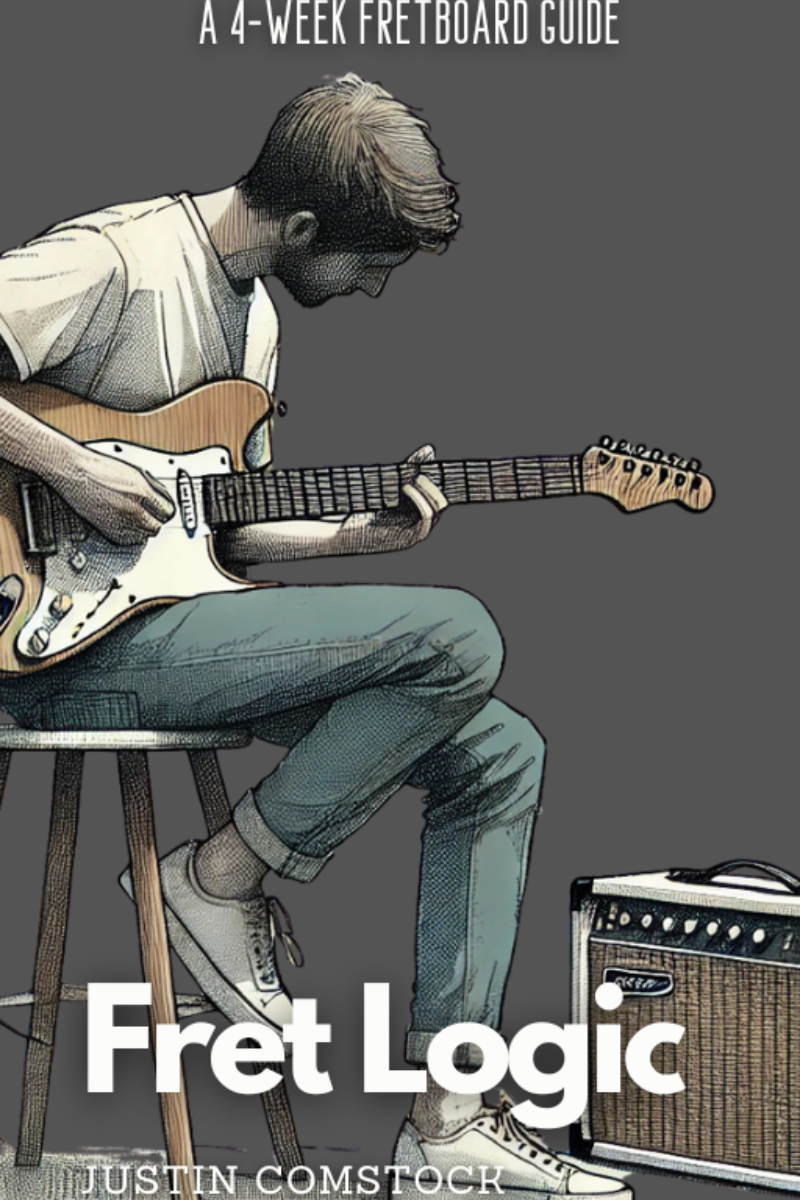
Join Guitar Freaks Hangout on Discord! 🎸
Get Fret Logic FREE!
Join the Guitar Freaks Hangout Discord and get exclusive access to my entire e-book, Fret Logic! Master the fretboard and elevate your solos with this comprehensive guide.
👉 Don’t miss out—join now and download your free copy!
This is where serious players come to master the fretboard without burnout or boring exercises.
Final Thoughts: Guitar Minor Scale Patterns Are the Path to Freedom
Look—if you’ve ever felt stuck in your playing… like you can’t connect the dots… like the fretboard is just too confusing…
You are not alone.
But the solution isn’t more YouTube videos or random tabs.
It’s a system.
And mastering guitar minor scale patterns is the foundation of that system.
So if you want to level up—grab your FretDeck from our Kickstarter campaign before it closes… and join our Discord to practice with a creative, supportive group of players just like you.
Because the truth is…
If you can visualize it, you can play it.
See you on the inside.
—
Justin Comstock
Founder, FretDeck & Guitar Freaks Blog
👉 Read: Mastering Minor Pentatonic Scales on Guitar
👉 Ultimate Guitar Backing Tracks – for jam track solo practice





